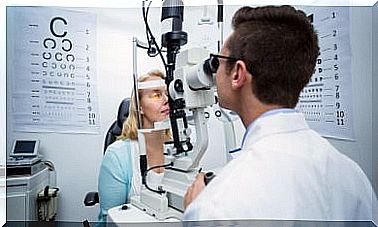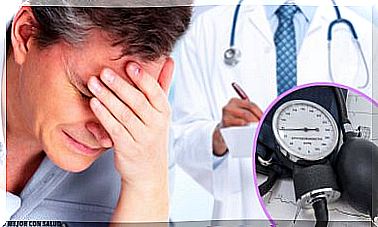Recovery After A Knee Transplant
The three central aspects in recovering from a knee transplant are: proper wound care, maintenance of a balanced diet, and regular physical activity.

Knee transplant operations are safe procedures, which generally offer very good results. However, for the process to be successful it is necessary to follow the recovery guidelines as disciplined as possible.
The recovery from the knee transplant is no greater mystery. Basically, it includes wound care, the occasional intake of the prescribed medications and regular physical activity.
The patient must be aware that the recovery process depends to a great extent on their cooperation. You will surely need the support of your family in the home care stage. However, with dedication, you will be able to complete the process without much trouble.
Knee transplant surgery

There are several causes why the knee deteriorates. Age is the most common factor, due to the wear and tear of bone cartilage that occurs over the years. Other factors such as obesity, high-impact sports or jobs that demand physical strength are also frequent.
In some cases the deterioration is considerable and therefore requires a knee transplant. This procedure replaces the most important parts of this joint with artificial components.
Typically, this type of surgery lasts between 2 and 3 hours. After the procedure, you move on to recovery. The patient will have a bandage and drain. The next day an X-ray is done and if all goes well, the person can begin to support the foot, thus formally beginning their recovery.
Recovery after a knee transplant
Typically, the person who has had a knee transplant stays in the hospital for 2 to 3 days. Then the home rehabilitation phase begins. At this stage, there are three types of care to be emphasized. They are as follows:
- Wound care. The main goal is to prevent an infection from occurring. To avoid this, you should change the bandage daily and take the prescribed medications. It is important to prevent the wound from getting excessively wet.
- Be careful when eating. A balanced diet contributes significantly to recovery after a knee transplant. Dietary supplements may be prescribed, especially if the patient is inattentive.
- Regular physical activity. This is a key element, especially during the first weeks of recovery. The physiotherapist indicates the exercises to be performed. The total recovery time will largely depend on the constancy and regularity.
The subject of physical activity is extremely relevant. In general, what is indicated is a gradual program of walks, together with the indication of specific exercises. You should return to daily activities as soon as possible.
Other general recommendations

There are a whole series of indications that are worth taking into account to achieve a speedy recovery. The main ones are:
- Have help. The first days will require the support of another person to carry out daily activities.
- Take care of the wound stitches. Generally, the wound must remain bandaged until the stitches are removed. This most often happens about two weeks after the knee transplant.
- Alternate positions on the operated knee. It is recommended to bend the knee every 20 minutes and change the position of the legs. Do not put pillows or cushions under the operated knee.
- Discomfort at night. If there is discomfort during the night, it is best to stand up and walk a bit.
- Proper footwear. Footwear must be comfortable and closed. This is vital for stability and prevents falls.
- Dress sitting. It is better for the patient to dress while sitting, as they do not have the usual stability.
- Keep your hands free. When walking, it is advisable to have your hands free. Not falling is a central purpose.
- The use of aids. The use of walkers, crutches or canes is not advisable, unless the doctor has explicitly indicated it.
Warning signs
Like any postoperative period, knee transplantation also carries possible risks and complications. The following are the main red flags. If one or more of them occur, the appropriate thing is to go immediately to the hospital. Let’s see:
- Heavy bleeding from the wound left over from the surgery.
- Constant and particularly high fever.
- Extreme pain, which cannot be controlled with the medications that were indicated for this purpose.
- Major swelling in the knee.
- Change in skin color, especially if it becomes very red or bluish or blackish in color.
- Deviation of the knee and inability to support the foot, after having suffered a fall.









